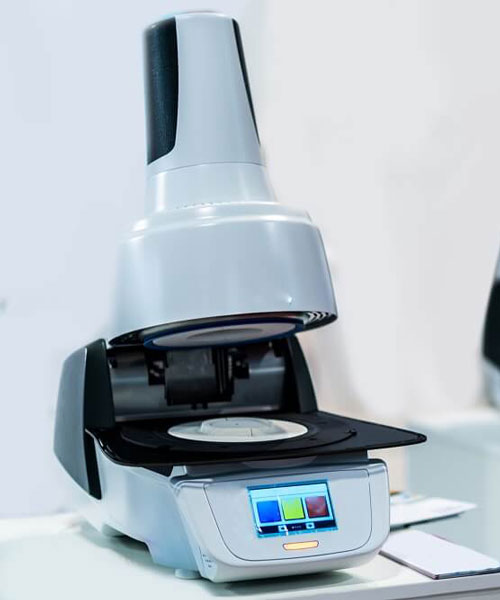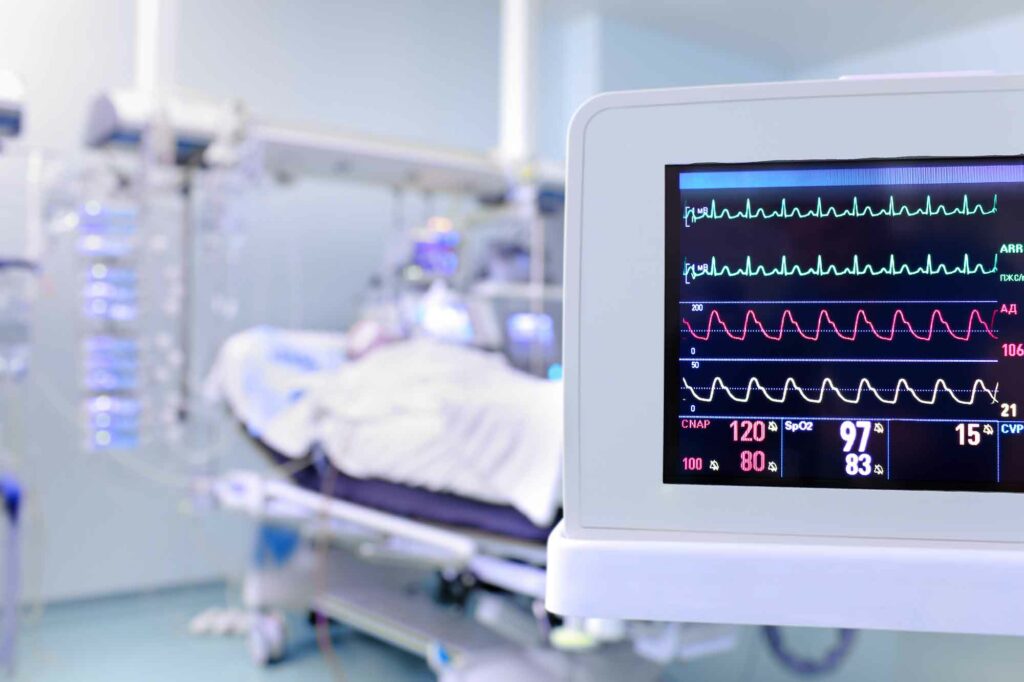Preventive maintenance for Tasmanian medical equipment
Ensure optimal performance and extended life-span of your medical equipment.
We perform preventive maintenance on your medical equipment to ensure better performance and extended life-span – saving you money in the long-run.
Preventive maintenance of your medical equipment is essential for ensuring better performance and reduced downtime.
Planned preventive maintenance may cause small hindrance, but pales in comparison to actual downtime of equipment caused by a malfunction.
- Less down time
- Longer life-span
- Improved safety
Biomedics will perform preventative maintenance on your equipment, according to manufacturer’s recommendations. On conclusion of preventive maintenance, Biomedics will supply detailed documentation, noting any subsequent actions/repairs that may be needed.

Ensure your medical equipment is maintained for optimal performance, safety and prolonged and life-span.
Reasons to consider preventive maintenance
Cost Savings
Preventive maintenance can save a company money because efforts will be focused on preventing equipment failure rather than conducting emergency repairs. Preventative maintenance procedures are a lot cheaper and faster than the preventable breakdowns.
Improved Safety
When equipment isn’t working in optimal condition, it could potentially create many unwanted issues. Preventive maintenance improves the safety of equipment and therefore the safety of the operators.
Decreased Equipment Downtime
While almost all maintenance tasks require some equipment downtime, a preventive maintenance program can decrease and optimize that downtime.
Improved Reliability
When equipment isn’t working in optimal condition, it could potentially create many unwanted issues. Preventive maintenance improves the safety of equipment and therefore the safety of the operators.
How our preventive maintenance process works:
1. Contact
Get in touch with our expert team to start the conversation.
2. Discuss
We’ll discuss your equipment, what needs to be done and set out a timeline.
3. Book
Book in your service for a time that works for you.
4. Peace of mind
Have the piece of mind that your equipment meets its required safety specifications.
Let us take the headaches out of maintaining your medical equipment.
Preventive Maintenance FAQs
Generally, any facility which utilises medical devices equipment must demonstrate compliance with the Work Health and Safety Act. This includes all medical practices, hospitals, dental offices, care facilities, surgical practices, and other organisations. Most importantly is any facility that owns and operates electrical medical equipment. Whether you have one device or thousands in your facility, testing and maintenance must be performed on each item.
In fact, a comprehensive effective maintenance program for a facility’s medical equipment is another requirement for compliance with AS/NZS 3551:2012. It is the organisation’s responsibility to ensure that medical equipment safety and performance is constantly maintained. The organisation must utilise regular assessments, verification testing, and preventive maintenance of the equipment throughout the organisation’s facilities to be able to demonstrate to inspectors that all efforts have been made to ensure the safety of all workers and patients.
Medical facilities are also subject to requirements of the Royal Australian College of General Practitioners (RACGP), along with many other regulatory requirements. The RACGP Standards for General Practice also requires regular servicing of electrical or battery-operated equipment. By implementing an equipment testing and maintenance program, the organisation can demonstrate compliance with many of these requirements.
There are many specific tests that may be performed to ensure your equipment meets all performance specifications. These tests generally fall into one of four primary categories, or verification methods:
- Inspection – usually a visual inspection of a physical component, but may also refer to testing done for software
- Demonstration – use of a device as intended to verify it performs as expected
- Test – A controlled input is used to directly measure a specific output
- Analysis – Testing equipment is used to evaluate a device over its entire operable range (the most rigorous type of verification)
Some types of tests are specifically to check for higher risk hazards, such as electrical shock and fire. Electrical testing requirements from AS/NZS 3551:2012 apply specifically to medical electrical devices, which includes where appropriate:
- Visual inspections of power mains supply
· Measurement of protective earth resistance (electrical ground)
· Insulation resistance
· Touch Current
· Earth Leakage Current
· Patient Leakage Current
· Mains Contact Current
There is a plethora of maintenance activities that can be performed to maximise the useful lifespan of equipment. All equipment manufacturers provide their own guidelines on how equipment can be maintained. The methods vary broadly in their specific instructions, but generally include:
· Electrical/Sensor Calibration
· Repair or replacement of parts designed for wear, or damaged parts
· Sterilisation
· Lubrication of moving parts
· Physical adjustments
· Routine Cleaning
· Cleaning air vents and filters
Most medical equipment will require preventive maintenance once a year. As described in the question above, your equipment may need a different type of maintenance than a calendar-based maintenance schedule. If you operate any system with a utilisation-based maintenance schedule, you can verify the manufacturer’s recommended preventive maintenance schedule. For example, a laser that requires preventive maintenance every 10,000 shots might need to be serviced every 4 or 5 months in a high-use practice, while the same type of system may not need to be serviced as often in a practice that doesn’t use it as frequently.
If you purchase a used piece of equipment with no clear indication of the last time it was used, it’s best to have preventive maintenance performed before you start using it on your patients. Equipment that has been in storage may have nothing wrong functionally or mechanically, but dust accumulation and other problems may lead to malfunctions while you’re using it.
The primary benefit of preventive maintenance is preventing equipment failures from occurring. This helps to prevent:
- A failure during an operation, which could have major safety implications for patients
- Increased liabilities from injuries to patients or those operating the equipment
- Downtime and loss of revenue
- Delays to procedures
- Expensive repairs
- Buying replacements for equipment that could have been maintained for many more years
Furthermore, preventive maintenance can make your equipment more reliable overtime, and make your facility more efficient and profitable. Documented preventive maintenance also provides evidence that your organisation performed its due diligence in protecting public health.
Foregoing preventive maintenance is a risky business strategy. You might save some money in the near term, but you open your organisation up to a huge range of negative consequences. Most importantly, the risk of injury by equipment failure dramatically increases. You can also expect the usable lifespan of that equipment to become shorter, meaning you’ll end up spending more overall when equipment needs repairs or needs to be replaced sooner than it would if it were properly maintained.
Additionally, an unexpected failure may result in higher cost emergency repairs to get you back up and running. The downtime from the equipment costs your organisation money for two reasons: one, there is a loss of revenue for every day that you cannot operate the equipment, and two, there are overhead costs that continue to accumulate while your equipment is unoperational.
Some regulations even require medical equipment to be maintained at regular intervals, particularly for radiation-emitting devices. Regulatory authorities may investigate your organisation in the event of an injury or other serious incident. The risk of legal trouble is significant, as inspection findings can result in warning for non-compliance with regulations, loss of practice accreditation, and potentially even legal action.

20+ years of experience in preventive maintenance.
Biomedics has been providing preventive maintenance across Tasmania for over twenty years. We work with a wide range of clients including:
- Hospitals
- Doctor’s surgeries
- Dentists
- Physiotherapists
- Anyone that uses medical equipment!
